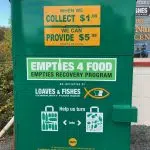
Cost of used icebreakers Ottawa is buying from Quebec shipyard approaches $1B mark
OTTAWA — The cost of three second-hand icebreakers that the federal Liberal government is buying from Quebec shipyard Chantier Davie is inching closer to the $1-billion mark as Ottawa keeps quietly adding money to the controversial deal.
The most recent cash infusion came last week as the government handed Davie another $68.9 million to continue converting and upgrading the icebreakers, bringing the total cost for the three vessels to more than $912 million.
That represents a significant increase over the original $610-million price tag announced by the Liberals when they agreed to purchase the three Norwegian-built civilian icebreakers for the Canadian Coast Guard in August 2018.
Both Davie as well as the Fisheries Department defended the added costs and the overall deal in separate statements, saying the agreement will deliver much-needed vessels for the coast guard to use until brand-new replacements can be built.


